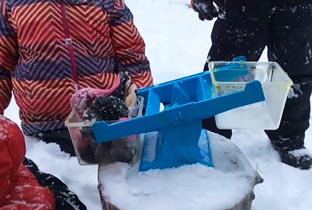Curriculum
Curriculum: Measurement
From the Ontario Ministry of Education Kindergarten Curriculum
- 2.2: demonstrate a willingness to try new experiences (e.g., experiment with new materials/tooedu.gov.on.ca/…um/elementary/kindergartenls; try out activities in a different learning area; select and persist with things that are challenging; experiment with writing)and to adapt to new situations (e.g., having visitors in the classroom, having a different educator occasionally, going on a field trip, riding the school bus) (SRWB)
- 3.2: demonstrate the ability to take turns during activity and discussions (e.g., while engaged in play with others; in discussions with peers and adults) (SRWB)
- 13.2: make predictions and observations before and during investigations (PSI)
- 13.3: select and use materials to carry out their own explorations (PSI)
- 13.4: communicate results and findings from individual and group investigations (e.g., explain and/or show how they made their structure; state simple conclusions from an experiment; record ideas using pictures, numbers, and labels) (PSI)
- 16.2: investigate strategies and materials used when measuring with non-standard units of measure (e.g., why feet used to measure length must be placed end to end with no gaps and not overlapping, and must all be the same size; why scoops used to measure water must be the same size and be filled to the top) (DLMB)
Context
Provide students with further opportunity to explore with the balance scales, using snow or other items of their choice
Materials
- Balance scales (as needed)
- Item to balance (snow, mitts, hats, or other items of choice)
Lesson
Introduction
- Explain to the students that they will be working together on balancing their mitts and hats (or items of choice) using the balance scales
- Recall previous experiences where students used the balance scales
- Ask students:
- How do we know when the balance scales are balanced?
- What we can do to balance items?
Lesson
- Divide students into small groups and assign each group a balance scale
- Probe students to think about how to arrange their items in order to get the scale to be balanced
- Challenge the students to balance their mitts and hats (or other items)
Closure
- Ask students:
- What did you notice when using the scales?
- What did you do to make sure the scales were balanced?
- Engage in further exploration with the balance skills to get students more familiar with the way that they work with materials found outside and inside the classroom


